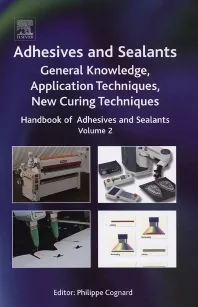Biocide Optimization: Blends of Actives

Over eighty percent of architectural paints are waterborne.1 The presence of water makes these paints very susceptible to microbial attack both in the wet state and as dry film. The addition of an in-can preservative will protect these coatings in the wet state during storage and transport. But after a coating has been applied and dried, it becomes susceptible to colonization by fungi and/or algae. The addition of a dry-film preservative (fungicide and/or algaecide) ensures long-term performance of the coating.
Currently, there is no single biocide that possesses all the properties of an ideal biocide. However, blends of bio-actives may be used to optimize performance and approach the efficacy of the "ideal" biocide.

Prevention and Protection
Biocides are important to prevent the microbial deterioration of many coatings. The two main applications of biocides are: (a) to prevent spoilage of the wet-state product during storage and transportation (in-can protection); and (b) to ensure long-term performance of the coating (dry-film protection).2Microbial growth in the wet state is usually manifested by a loss of product functionality and may include gas formation, offensive odors and changes in pH, viscosity and color.3 Microbial contaminants can be introduced with water (process water, wash water), with raw materials (latex, fillers, pigments, etc.) and by poor plant hygiene. Bacteria are the most common spoilage organisms, but fungi and yeasts are sometimes responsible for product deterioration. Spoilage of the waterborne products, which may go unnoticed until the product reaches the consumer, can result in significant economic loss. Good plant hygiene and manufacturing practices, when combined with the use of an optimized biocide, will minimize the risk of microbial spoilage of the coating.4,5
Upon drying, both water- and solventborne coatings are susceptible to colonization by fungi and/or algae. Microorganism growth on dry-film not only affects the coating appearance (discoloration), but may also compromise its performance (biodeterioration). Fungi can penetrate coatings, resulting in cracking, blistering and loss of adhesion, leading to decay or corrosion of the underlying substrate. Algae colonies, which seem to grow more rapidly on porous substrates such as stucco, cement and bricks, can occlude water. The freezing and thawing of this entrapped water may induce cracking or increase the permeation properties of the coating, leading to failure. The presence of water may also encourage colonization by other microorganisms, which in turn may cause biodeterioration.6


Blending Biocides
There is no universal biocide active ingredient that is compatible with all formulations and meets the requirements of the coatings manufacturer. Among the various actives used for in-can preservation, there are fast-acting biocides, e.g., O-formals, N-formals and 5-chloro-N-methylisothiazolin-3-one (CIT); and slow-acting biocides, e.g., benzisothiazoline (BIT) and chloroallyl-3,5,7-azoniaadamantane chloride (adamantane). There are biocides with deficiencies in their activity spectra, such as BIT and N-methylisothiazolone (MIT), which have limited antifungal activity.8 Some biocides (e.g., isothiazolones) are known to be skin irritants and sensitizers. Others may release formaldehyde. These include O-formals, N-formals, triazines and adamantanes.Bioactives suitable for dry-film preservation differ in water solubility. Two of the more water-soluble are 2-n-octyl-4-isothiazolin-3-one (OIT) and 3-iodo-2-propylbutyl carbamate (IPBC). Some, such as the fungicide carbendazim, have deficiencies in antifungal spectra. Carbendazim does not inhibit the common fungal isolates, Alternaria sp.
The use of a single active ingredient may be sufficient to protect a coating against in-can spoilage or dry-film defacement; however, in many cases it may be advantageous to use a blend of actives. For example, the combination of certain active ingredients can result in synergy (less amounts of each active are necessary to bring about the same inhibitory effect as the use of either active alone).

An in-can preservation test was conducted following the test method described in Standards on Materials and Environmental Microbiology by the American Society for Testing and Materials (ASTM D 2574-97).10 As shown in Table 2, a use level of 0.2% by wt. of either the FD- or the BIT-based biocides was required to protect the tested paint. However, only 0.1% by wt. of the blend was required to offer the same degree of protection. Thus, blends of actives may allow manufacturers to protect a product at reduced levels, providing not only a potential cost benefit but also a product that is more environmentally friendly. In addition, blends of actives may have a better compatibility profile than when each of the active ingredients is used alone. Furthermore, the ability to protect a product with lower use levels of certain actives may circumvent labeling issues (


Because all treatments were added at the same levels (1%), and the total amount of actives was lower in the blend (30% vs. 40%), the exposure tests clearly show the benefits of this synergistic blend. By combining the actives CTL and IPBC with different solubility properties, the synergistic blend provides a dual action: fast acting/long lasting protection.
Yet another type of blend is one in which active ingredients with different target microorganisms are combined, providing a broader spectrum of antimicrobial activity. These blends include (a) combinations of fungicides plus algaecide [e.g., CTL plus S-triazine, IPBC plus N-(3,4-dichlorophenyl)-N,N-dimethylurea (diuron), carbendazim plus diuron, CTL plus diuron, etc.], (b) combinations of fungicides with certain deficiencies in their antimicrobial spectrum (e.g., carbendazim plus OIT or carbendazim plus IPBC), or (c) combinations of an in-can bactericide plus a fungicide (triazines plus carbendazim, etc.). While many of these combinations are regarded as "silver bullet" biocides (formulas can be simplified, inventory can be reduced), they also have some limitations. For example, the fixed ratio of active ingredients does not allow product optimization.

To Blend or Not
Not all blends are made equal. Some blends seem to be more effective than others. For example, in comparing the performance of blends containing combinations of fungicides and algaecides, some blends seem to outperform others (Figure 2). Performance may be related to the actual active ingredients blended, to the matrix where the blend is used, or - in the case of dry film protection - to the climatic conditions where exposures take place.
As with the use of any single active ingredient, compatibility issues should be ruled out before using a blend. A major disadvantage of any synergistic blend is that, if one of the active ingredients is deactivated, the level of the second active ingredient alone may not be sufficient to protect the product.

In Summary
The ideal biocide - one that is compatible with all formulations and all processing conditions, active against all microorganisms, environmentally friendly, and cost effective - has yet to be discovered. While the use of single active ingredients may be sufficient to prevent in-can microbial spoilage or dry film defacement, blends of actives may be used to optimize biocide performance. Depending on the blend, the advantages of using blends of actives may include lower use levels, fast-acting/longer term protection, broader antimicrobial spectrum, improved compatibility profile, increased cost effectiveness and environmentally friendly end products.Acknowledgment
The author wishes to thank Dr. William Woods, Larry Liu and Daniel Brown, International Specialty Products, for their help and contributions to this article.
References
1 National Paint & Coatings Association. U.S. Paint & Coatings Market Analysis. Figure 7-2, p 132 (2000-2005).
2 Woods, W.B. "Industrial Biocides for Use in Coatings", Australian Coatings Journal, No.6, 6 (2000).
3 Gillat, J.W. "Bacterial and Fungal Spoilage of Waterborne Formulations During Production and Storage: Remedial and Preventive Measures," Surface Coatings International, No. 10, 387 (1992).
4 Winkowski, K. "Controlling Microbial Contamination", Paints and Coatings Industry, No. 7, 60 (2002)
5 Woods, W.B. "Prevention of the Microbial Spoilage of Latex Paint", Journal of Waterborne Coatings, No.11, 2 (1982).
6 Wright, I.C. "The Deterioration of Paint Films by Algae and Lichens", Biodeterioration VI, 637 (1986).
7 Bussjaeger, S.; Daisey, G.; Simmons, R.; Spindel, S.; and Williams, S. "Mildew and Mildew Control for Wood Surfaces", Journal of Coatings Technology, 71, No.890, 67 (1999).
8 Collier, P.J.; Ramsey A.J.; and Gilbert P. "Growth Inhibitory Activity of Some Isothiazolone Biocides", Journal of Applied Bacteriology, No. 69, 569 (1990).
9 Kull, F.C.; Eisman P.C.; Sylwestrowicz H.D.; and Mayer R.L. "Mixtures of Quaternary Ammonium Compounds and Long-chain Fatty Acids as Antifungal Agents", Applied Microbiology, No.9, 538 (1960).
10 ASTM Method D2574-97, "Resistance of Emulsion Paints in the Container to Attack by Microorganisms. In ASTM Standards on Materials and Environmental Microbiology. American Society for Testing and Materials, Philadelphia, (1997).
11 Hensen, J. " IPBC- A New Fungicide for Wood Protection" Modern Paint and Coatings, No.11, 50 (1984).
12 United States Environmental Protection Agency. Reregistration eligibility decision Chlorothalonil. Document Number EPA 738-R-99-004 (1999).
Looking for a reprint of this article?
From high-res PDFs to custom plaques, order your copy today!







